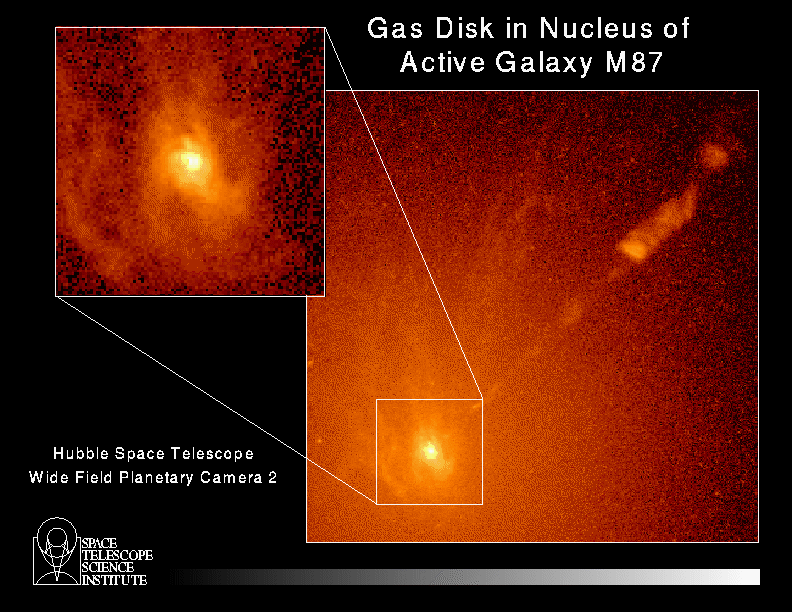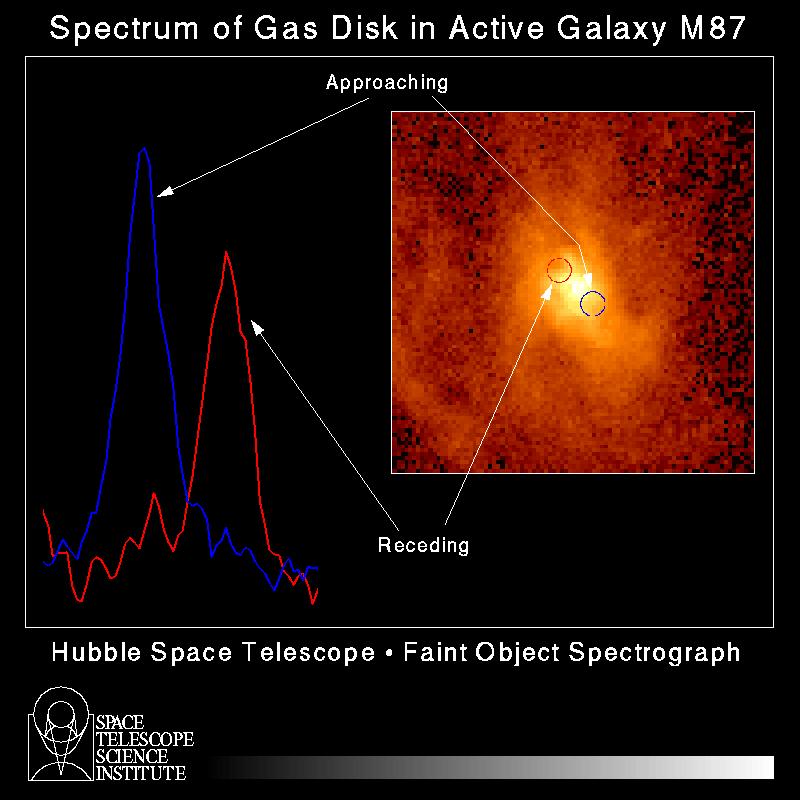
A NASA Hubble Space Telescope image of a spiral-shaped disk of hot gas in the core of active galaxy M87. HST measurements show the disk is rotating so rapidly it contains a massive black hole at its hub.
A black hole is an object that is so massive yet compact nothing can escape its gravitational pull, not even light. The object at the center of M87 fits that description. It weights as much as three billion suns, but is concentrated into a space no larger than our solar system.
Now that astronomers have seen the signature of the tremendous gravitational field at the center of M87, it is clear that the region contains only a fraction of the number of stars that would be necessary to create such a powerful attraction.
The giant elliptical galaxy M87 is located 50 million light-years away in the constellation Virgo. Earlier observations suggested the black hole was present, but were not decisive. A brilliant jet of high- speed electrons that emits from the nucleus (diagonal line across image) is believed to be produced by the black hole "engine."
The image was taken with HST's Wide Field Planetary Camera 2

A schematic diagram of velocity measurements of a rotating disk of hot gas in the core of active galaxy M87.
The measurement was made by studying how the light from the disk is redshifted and blueshifted -- as part of the swirling disk spins in earth's direction and the other side spins away from earth. The gas on one side of the disk is speeding away from Earth, at a speed of about 1.2 million miles per hour (550 kilometers per second). The gas on the other side of the disk is orbiting around at the same speed, but in the opposite direction, as it approaches viewers on Earth.
This high velocity is the signature of the tremendous gravitational field at the center of M87. This is clear evidence that the region harbors a massive black hole, since it contains only a fraction of the number of stars that would be necessary to create such a powerful attraction.
A black hole is an object that is so massive yet compact nothing can escape its gravitational pull, not even light. The object at the center of M87 fits that description. It weights as much as three billion suns, but is concentrated into a space no larger than our solar system.
The observations were made with HST's Faint Object Spectrograph.
Credit: Holland Ford, Space Telescope Science Institute/Johns Hopkins University; Richard Harms, Applied Research Corp.; Zlatan Tsvetanov, Arthur Davidsen, and Gerard Kriss at Johns Hopkins; Ralph Bohlin and George Hartig at Space Telescope Science Institute; Linda Dressel and Ajay K. Kochhar at Applied Research Corp. in Landover, Md.; and Bruce Margon from the University of Washington in Seattle. NASA